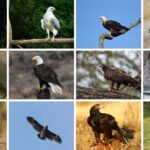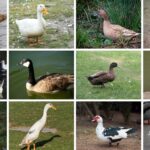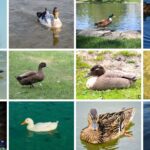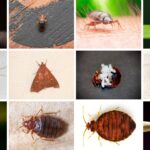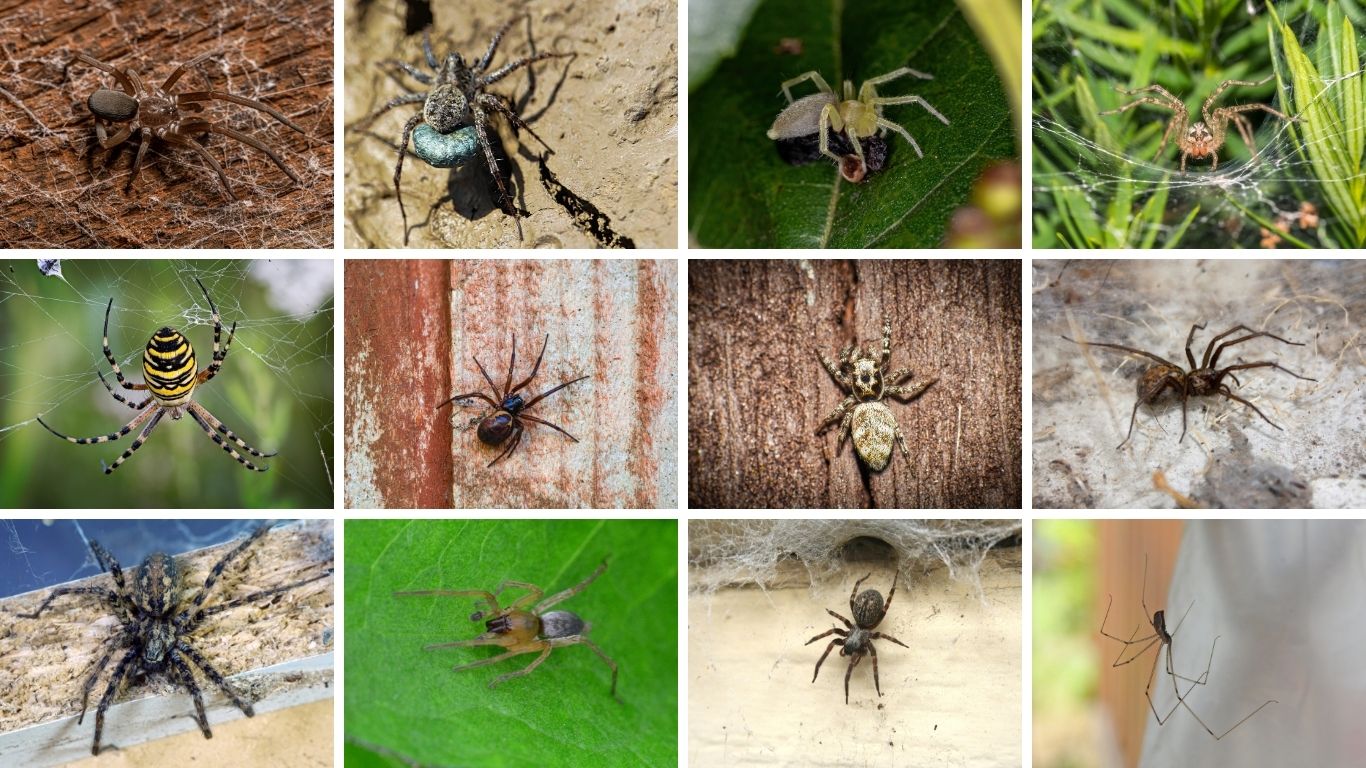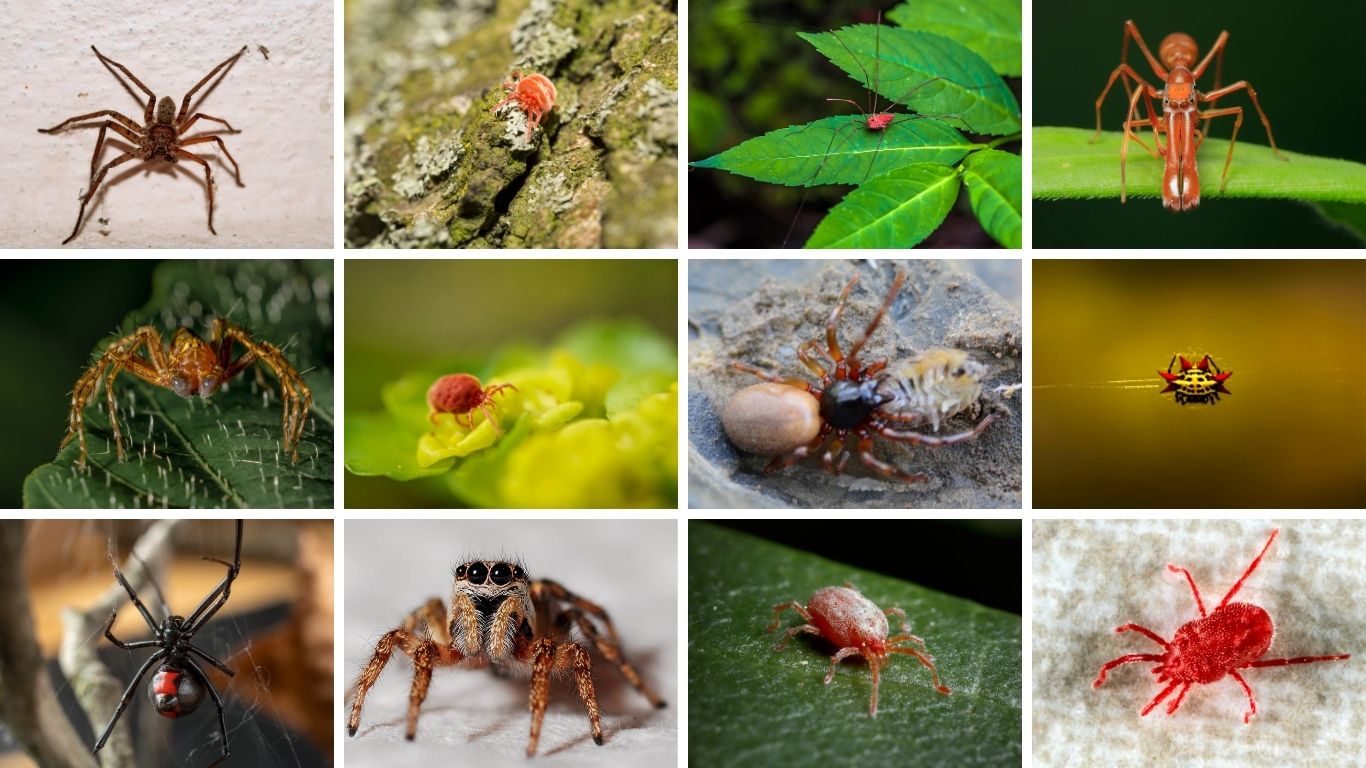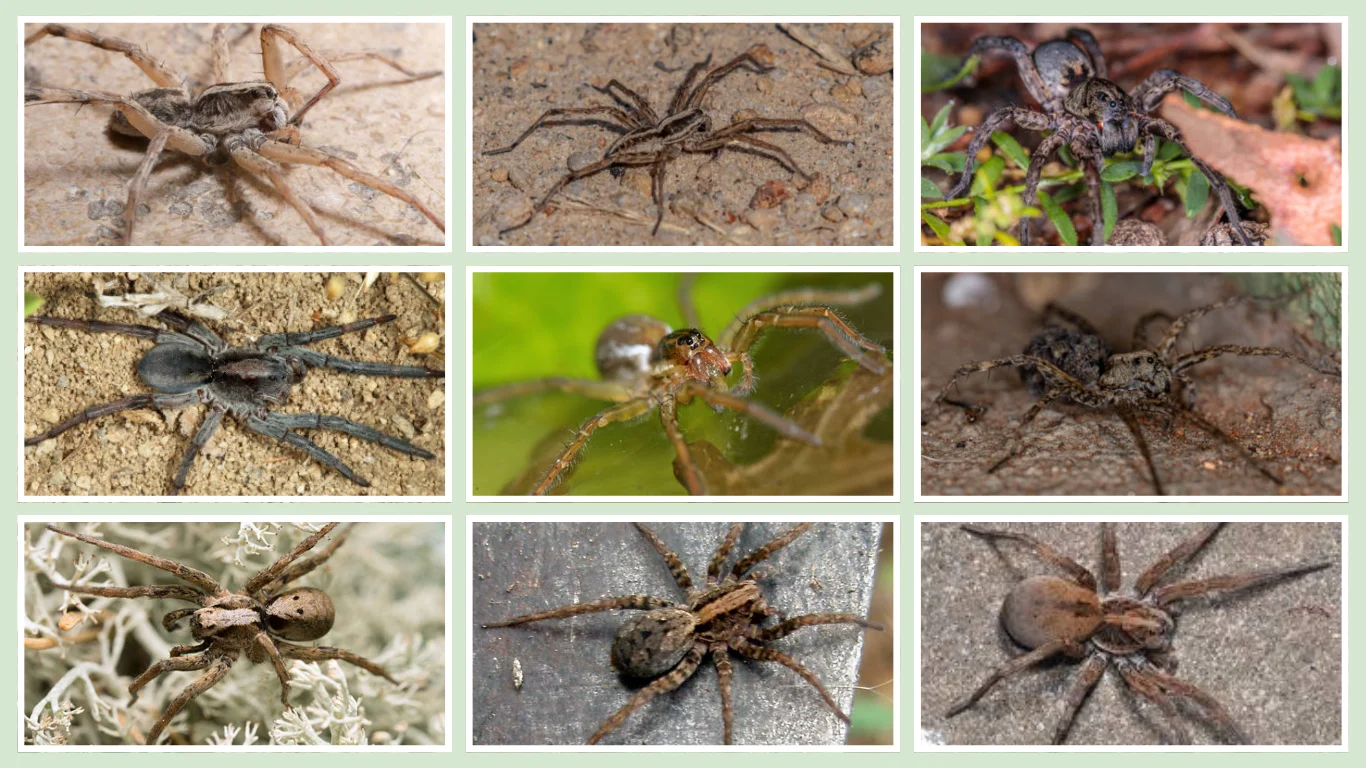House spiders are a familiar sight in basements, corners, and ceilings—but not all are the same. This guide introduces 20 different types of house spiders you might find indoors. From harmless web-builders to quick-moving hunters, each spider plays a role in keeping insect pests under control. Learn how to identify them and understand where they hide in your home.
1. Common House Spider (Parasteatoda tepidariorum)
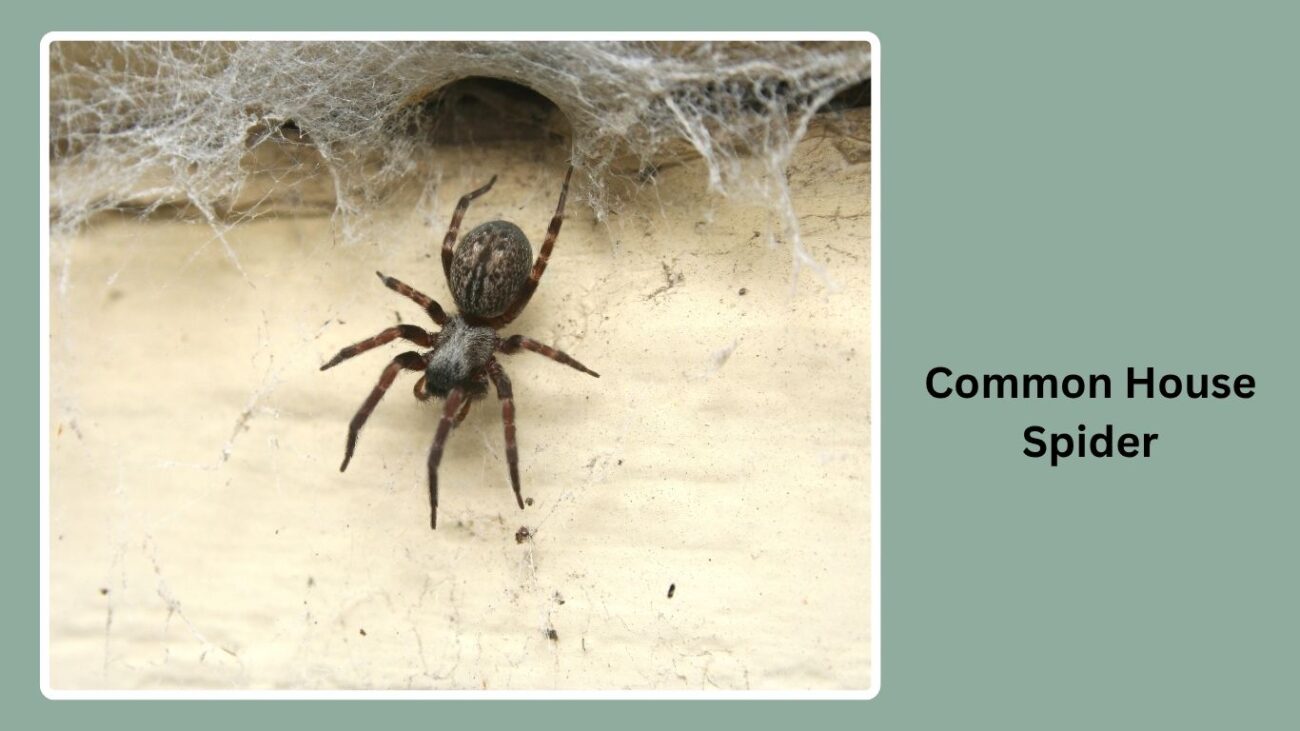
The Common House Spider is one of the most frequently seen spiders inside homes. They are harmless to humans and play an important role in controlling indoor insect pests. These spiders are often found in dark, quiet corners of rooms, basements, and garages, spinning irregular, tangled webs.
Identification
- Small to medium-sized body (4–9 mm)
- Color varies: usually yellowish-brown with dirty white or gray patterns
- Abdomen is round and often spotted
- Long, slender legs
- Builds messy, cobweb-style webs in corners and ceilings
Behavior
The Common House Spider typically stays in its web and waits for prey to get trapped. It rarely leaves the web unless disturbed or hunting. While they may look intimidating, they do not bite unless provoked and their venom is not dangerous to humans.
Habitat
These spiders prefer quiet indoor places such as attics, basements, behind furniture, window sills, and ceiling corners. They are also found in barns, sheds, and garages where insect activity is high.
Web Type
They spin irregular, sticky cobwebs, often in the same spot for long periods unless disturbed. The web has a retreat area where the spider hides when alarmed.
2. Cellar Spider (Pholcus phalangioides)
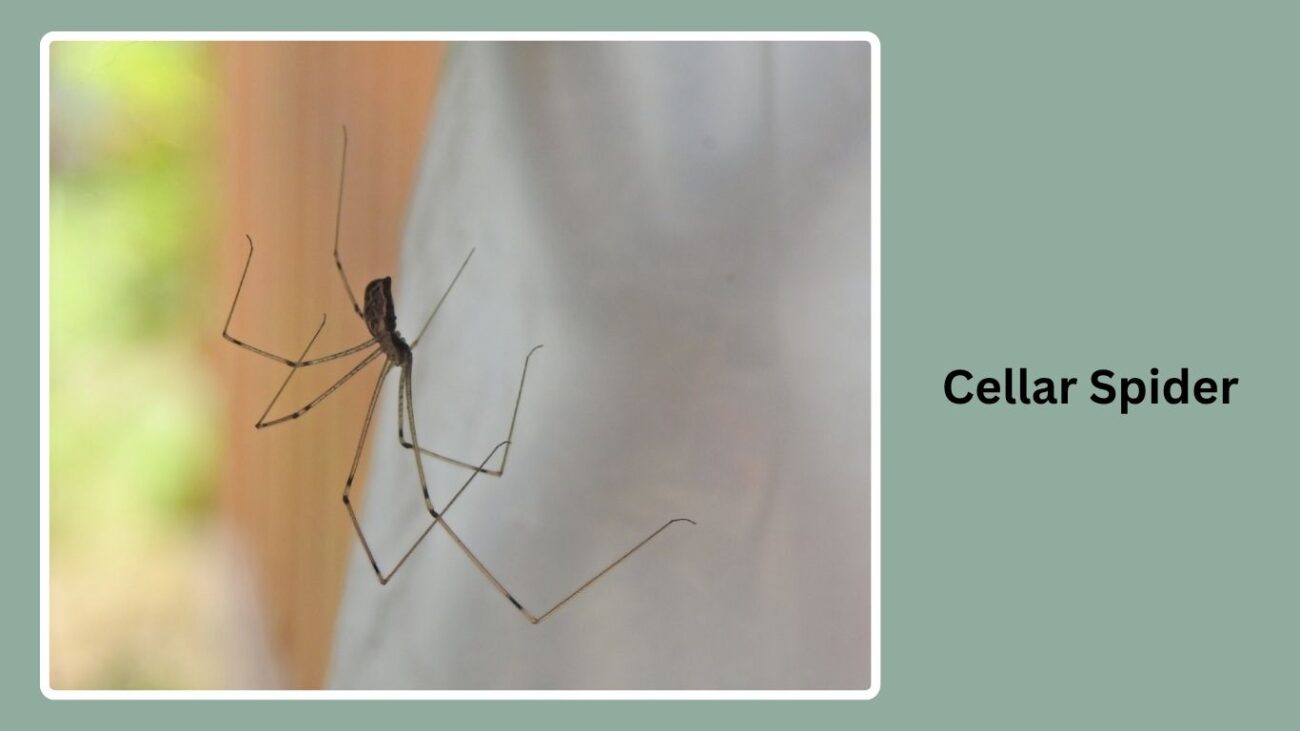
Cellar Spiders, often nicknamed “Daddy Long Legs” (though not true daddy longlegs), are delicate, long-legged spiders commonly found inside homes. They are non-aggressive and pose no threat to humans. Their long, spindly legs and vibrating web defense make them easy to identify in corners and basements.
Identification
- Body length around 7–8 mm, legs can reach up to 5–6 cm
- Light brown or grayish body
- Extremely long, thin legs
- Small, peanut-shaped body
- Often seen hanging upside down in their web
Behavior
These spiders are known for their “web dancing”—shaking rapidly when disturbed to confuse predators. They feed on insects and even other spiders, making them useful house guests.
Habitat
They prefer damp, dark places such as basements, cellars, under sinks, and ceiling corners. They’re also found in garages, attics, and storage rooms.
Web Type
Cellar Spiders build irregular, tangled webs in undisturbed areas. The web is not sticky but efficient in trapping prey due to its structure and the spider’s fast attack.
3. Hobo Spider (Eratigena agrestis)
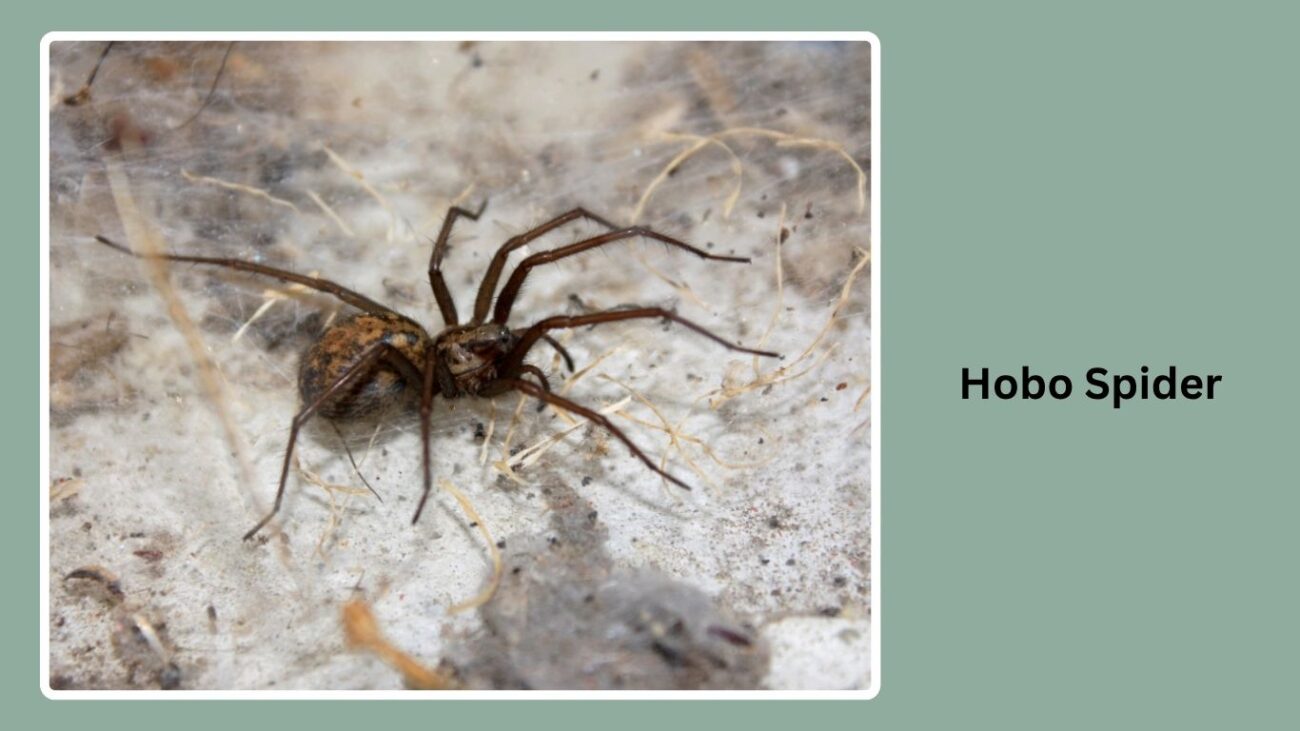
Hobo Spiders are ground-dwelling funnel web spiders sometimes found indoors, especially during late summer and fall. While often mistaken for the more dangerous Brown Recluse, Hobo Spiders are generally not aggressive and their bite is considered medically insignificant.
Identification
- Brown body, 7–14 mm in length
- Legs are hairy, without bands
- Abdomen has a herringbone or chevron pattern
- No distinct color markings on legs or cephalothorax
- Lacks the violin-shaped mark found in Brown Recluse
Behavior
Hobo Spiders are active hunters and do not rely solely on their webs. They may wander inside homes in search of mates, especially during mating season. They’re fast runners but typically retreat if disturbed.
Habitat
They prefer basements, crawlspaces, and lower levels of homes. Outdoors, they are found in woodpiles, rock crevices, and garden debris.
Web Type
They construct funnel-shaped webs with a tubular retreat. The spider hides in the tunnel and waits for prey to enter the web, then rushes out to attack.
4. American House Spider (Parasteatoda tepidariorum)

The American House Spider is often confused with the Common House Spider—they’re actually the same species but popularly named this way in the U.S. They are harmless, shy, and frequently found in quiet indoor spaces, where they help reduce insect pests.
Identification
- Body length around 5–8 mm
- Brownish or tan body with various markings
- Round, bulbous abdomen with dark patterns
- Long, slender legs with faint banding
- Builds messy, cobweb-style webs
Behavior
These spiders are sedentary and stay in one place for long periods. They rely on their webs to trap flies, mosquitoes, and other small insects. If disturbed, they drop from the web or retreat to a corner.
Habitat
Found in ceilings, windowsills, closets, basements, and garages—anyplace where they can remain undisturbed. They prefer corners and cracks with little human traffic.
Web Type
Their webs are classic cobwebs—irregular, sticky, and often built in layers. They rarely move unless food is scarce or their web is destroyed.
5. Domestic House Spider (Tegenaria domestica)

The Domestic House Spider is a fast-moving funnel weaver commonly seen in homes across Europe and North America. Despite their large size and speed, they are harmless to humans and rarely bite.
Identification
- Body size: females 7–11 mm, males slightly smaller
- Dark brown or grayish body
- Abdomen has distinct chevron (V-shaped) patterns
- Long legs with fine hairs and faint banding
- Builds flat webs with a funnel-shaped retreat
Behavior
Domestic House Spiders are shy and tend to retreat when approached. They wait at the back of their funnel-shaped web for prey to wander in. They may be seen running across floors, especially in autumn during mating season.
Habitat
They favor cool, dark, and dry places like corners of rooms, wall crevices, under furniture, and garages. They’re also found in attics and behind baseboards.
Web Type
Their web is a flat sheet with a funnel-like tunnel where the spider hides. It’s not sticky but effective at tangling prey.
6. Long-Bodied Cellar Spider (Pholcus spp.)
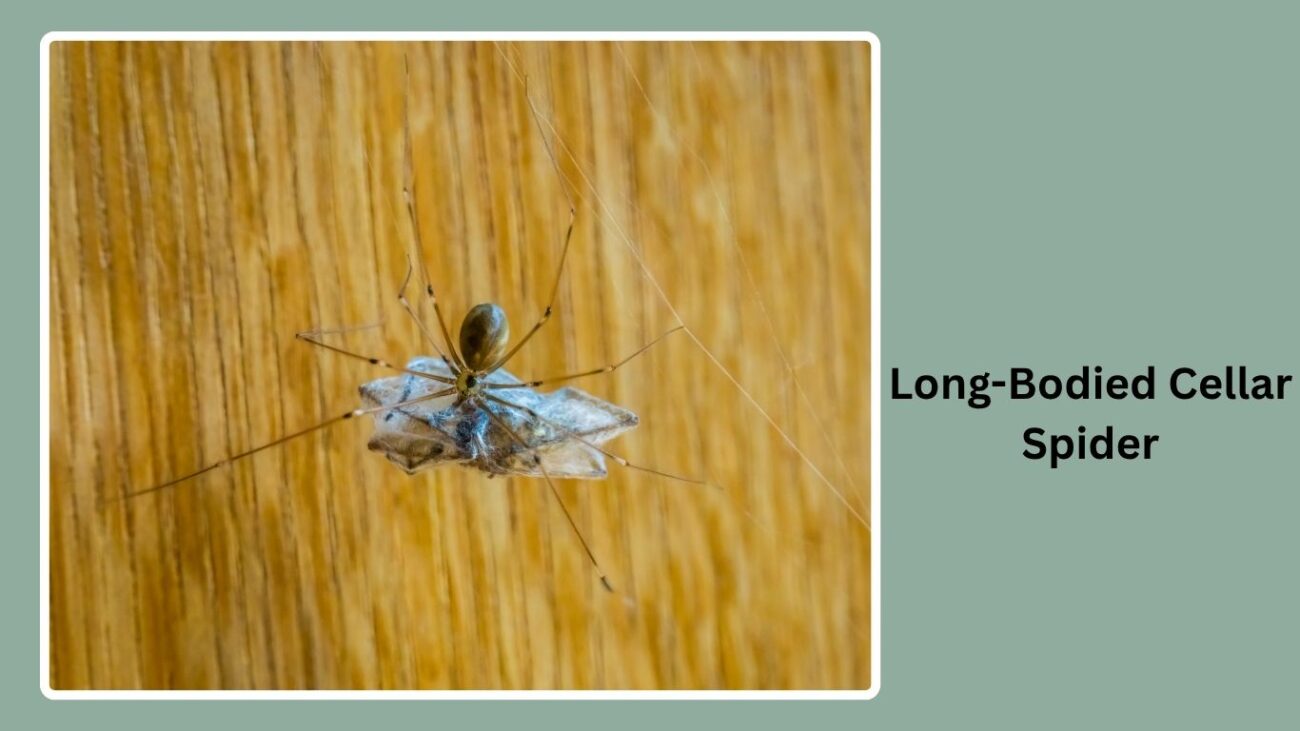
The Long-Bodied Cellar Spider is a specific type within the Cellar Spider group, distinguished by its elongated body. Often mistaken for other “daddy longlegs,” this spider is entirely harmless and helpful in controlling indoor pest populations.
Identification
- Body length: 7–10 mm
- Long, tube-shaped body (more slender than typical cellar spiders)
- Pale yellow, tan, or light brown coloring
- Extremely long, delicate legs
- Often found hanging upside down in its web
Behavior
This spider is non-aggressive and rarely leaves its web. When disturbed, it vibrates rapidly in place to confuse predators. It often feeds on other spiders and small insects, sometimes invading other webs to steal food.
Habitat
Thrives in dark, humid indoor spaces—especially basements, crawlspaces, and behind shelves. They also prefer upper corners of ceilings in bathrooms, pantries, or rarely-used rooms.
Web Type
Spins a loose, irregular web, usually high on walls or ceilings. The spider remains in the center or in a hidden spot nearby, watching for vibrations from trapped prey.
7. Jumping Spider (Salticidae family)

Jumping Spiders are energetic, curious spiders that occasionally find their way indoors. Unlike web builders, they actively hunt their prey and are known for their excellent vision and leaping ability.
Identification
- Small size: 4–12 mm depending on species
- Compact body with thick legs
- Often black or brown with white, orange, or iridescent markings
- Large, forward-facing eyes give them a “cute” look
- Moves in jerky, stop-start motion
Behavior
Jumping Spiders are active during the day, exploring walls, furniture, and window sills in search of prey. They don’t build webs for catching food but may leave silk draglines. They’re curious and will often observe movement nearby, including people.
Habitat
Indoors, they are seen on sunny windowsills, bookshelves, desks, or walls. They prefer warm, dry places where insects are present, especially near natural light.
Web Type
Does not build traditional prey-catching webs. Instead, they spin small silk retreats for sleeping or hiding and use silk as safety lines when jumping.
8. Wolf Spider (Lycosidae family)

Wolf Spiders are ground-dwelling hunters that may occasionally enter homes—especially in autumn when temperatures drop. Though their large size and fast movement may alarm people, they are non-aggressive and rarely bite.
Identification
- Size varies: 10–35 mm depending on species
- Usually brown, gray, or tan with darker markings
- Sturdy, hairy body and long legs
- Prominent eyes: two large front eyes give them excellent vision
- Does not build webs for hunting
Behavior
Wolf Spiders actively hunt instead of trapping prey in webs. Indoors, they may be found wandering across floors or hiding in basements and garages. If cornered, they may rear up in defense but quickly retreat if given space.
Habitat
They prefer lower levels of homes, such as basements, crawlspaces, or garages. Outdoors, they live under rocks, logs, and leaves but may enter homes through cracks and open doors.
Web Type
Wolf Spiders don’t spin webs to catch food. Instead, they create silk retreats or burrows lined with silk where they hide during the day.
9. Brown Recluse Spider (Loxosceles reclusa)
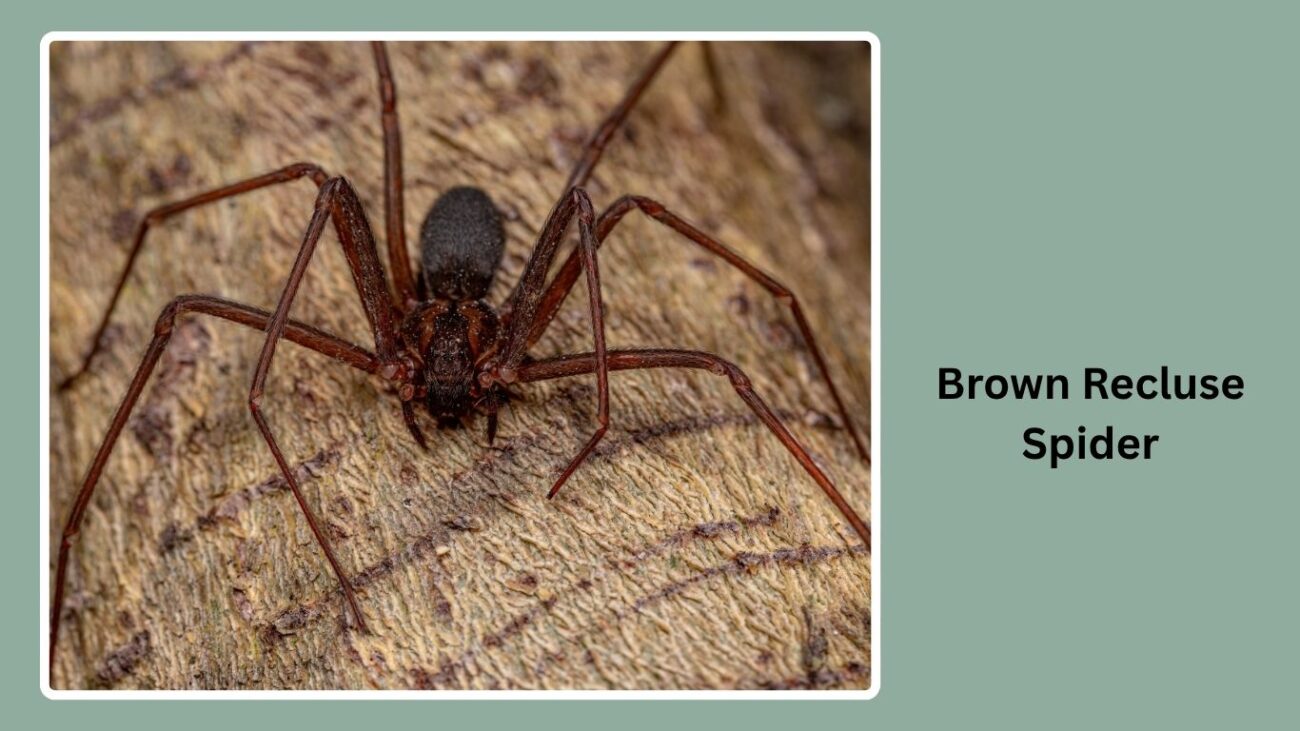
The Brown Recluse is one of the more medically significant house spiders in the U.S. It is reclusive by nature and avoids human contact. While bites are rare, they can cause skin irritation or necrotic wounds in some cases.
Identification
- Body size: 6–12 mm
- Light to dark brown coloration
- Distinct violin-shaped mark on the cephalothorax
- Uniform-colored legs (no banding)
- Six eyes arranged in pairs (unusual among spiders)
Behavior
True to its name, the Brown Recluse hides in dark, undisturbed areas and comes out at night to hunt. It only bites when pressed against the skin, such as while putting on clothes or shoes.
Habitat
Indoors, they prefer closets, basements, behind furniture, inside shoes, or stored boxes. They thrive in dry, quiet areas with little disturbance.
Web Type
They spin irregular, thin webs mainly used for hiding, not for catching prey. Their webs are usually located in corners, under furniture, or in wall voids.
10. Black Widow Spider (Latrodectus spp.)
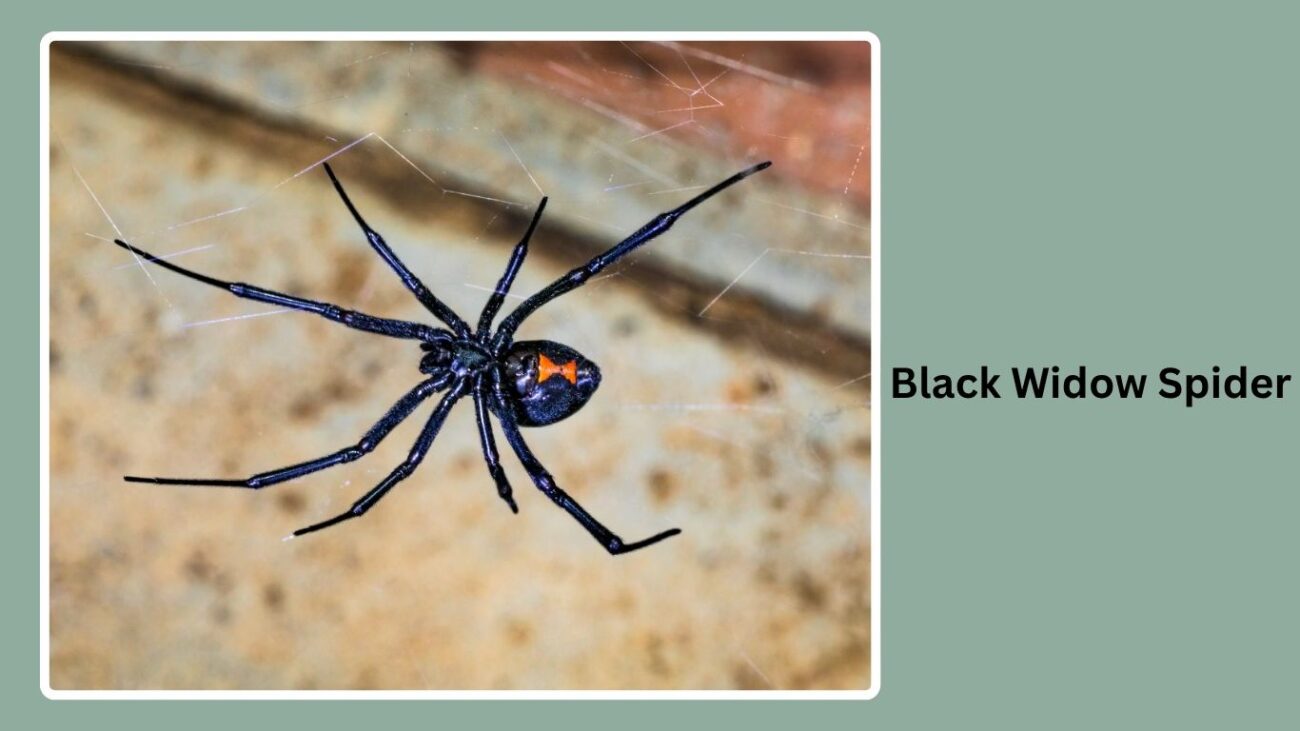
Black Widow Spiders are among the most feared house spiders due to their potent venom. However, they are not aggressive and rarely bite unless provoked. They are mostly active at night and prefer quiet, dimly lit areas of homes or outbuildings.
Identification
- Female body size: 8–13 mm (males are smaller and less noticeable)
- Glossy black body
- Distinctive red or orange hourglass shape on the underside of the abdomen
- Long, thin legs
- Round, bulbous abdomen
Behavior
Black Widows are solitary and nocturnal. During the day, they hide in their webs, coming out only when prey is present. Bites usually occur when they are accidentally pressed or disturbed, often when reaching into dark corners or storage areas.
Habitat
Typically found in basements, garages, sheds, crawlspaces, and behind clutter. They prefer dry, undisturbed spaces like woodpiles, old boxes, or underneath furniture.
Web Type
They spin irregular, tangled cobwebs close to the ground. The web is strong and sticky, designed to trap insects and other small prey.
11. Giant House Spider (Eratigena atrica)
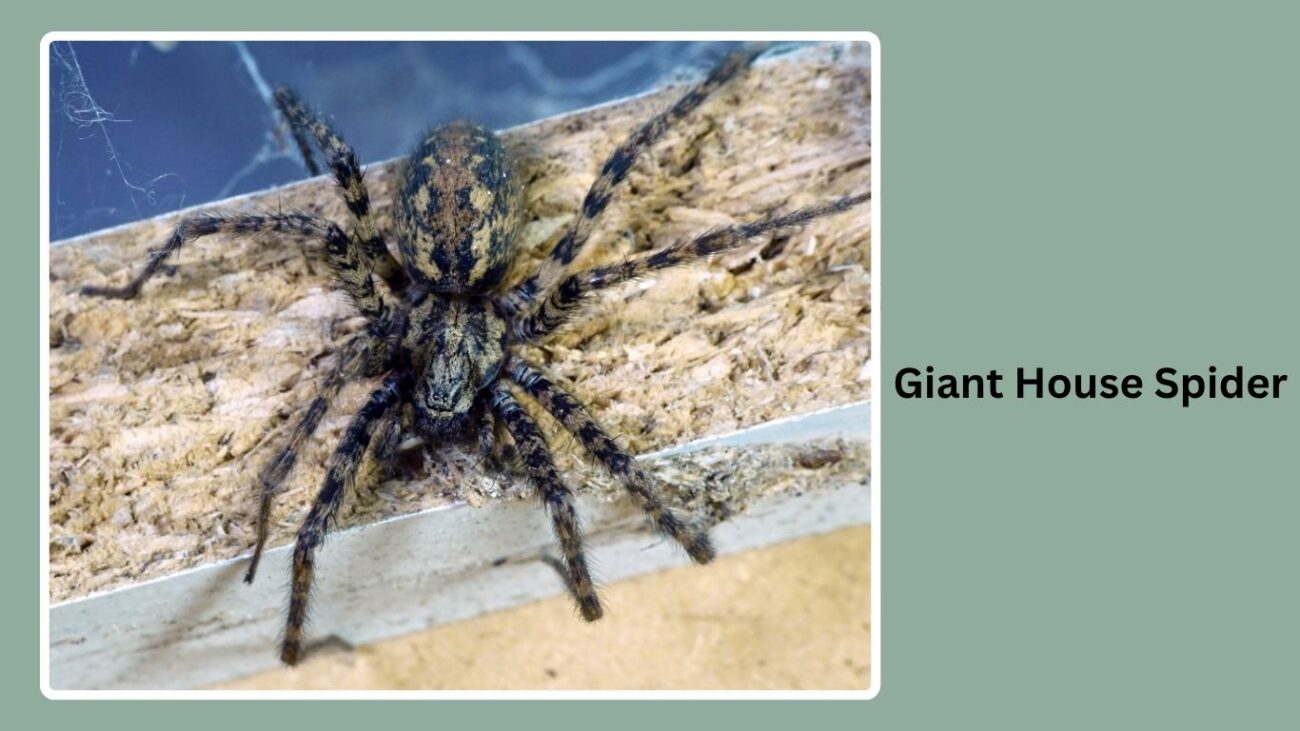
The Giant House Spider is one of the largest spiders commonly seen indoors, especially in Europe. Despite its size and speed, it is harmless to humans and helps control other pests.
Identification
- Body size: 12–18 mm (leg span can exceed 7 cm)
- Dark brown or gray body with lighter markings
- Chevron patterns on the abdomen
- Long legs with a slight hairy appearance
- Often mistaken for the Hobo Spider
Behavior
These spiders are fast runners and are often seen darting across floors, particularly in autumn during mating season. They are not aggressive and tend to hide quickly when disturbed.
Habitat
Commonly found in basements, garages, and attics. Indoors, they shelter under furniture, behind appliances, and in wall gaps.
Web Type
They construct large sheet-like webs with a funnel-shaped retreat where they hide and wait for prey. The webs are usually placed in corners or low-traffic areas.
12. Sac Spider (Cheiracanthium spp.)
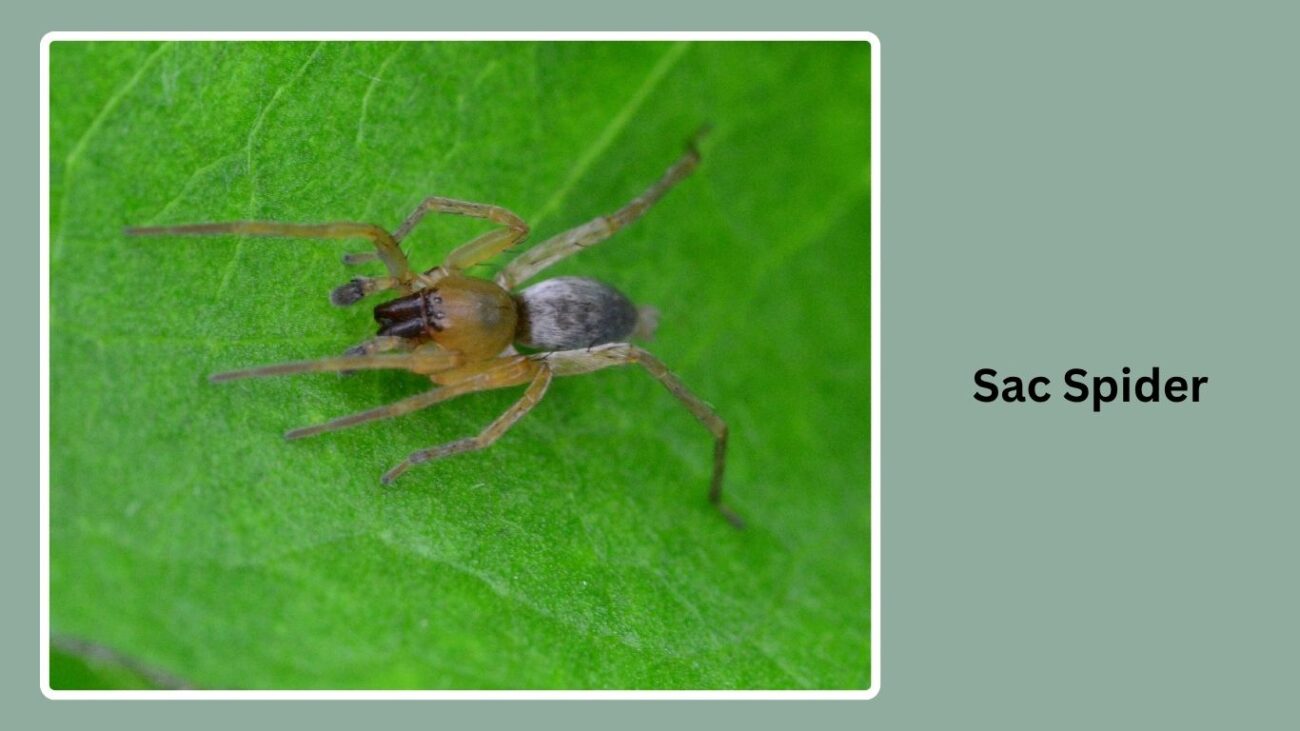
Sac Spiders are small, fast-moving hunters that often enter homes, especially in late summer and fall. They are known for creating small silken sacs or retreats where they rest during the day. Though their bites can cause mild irritation, they are not considered dangerous.
Identification
- Body size: 5–10 mm
- Pale yellow, cream, or light green color
- Darker chelicerae (fangs/mouthparts)
- Oval-shaped abdomen
- Legs are slightly translucent and uniformly colored
Behavior
Sac Spiders are nocturnal and do not build webs to catch prey. They hunt insects and other small arthropods at night. During the day, they rest in a silken sac tucked in wall corners, behind curtains, or under furniture.
Habitat
Indoors, they hide in upper corners, curtain folds, closets, baseboards, and near ceilings. Outdoors, they live in leaf litter and under bark but often move indoors as temperatures cool.
Web Type
They spin small, white, silken sacs in corners or along ceiling edges, used for shelter—not for catching prey.
13. Zebra Jumping Spider (Salticus scenicus)
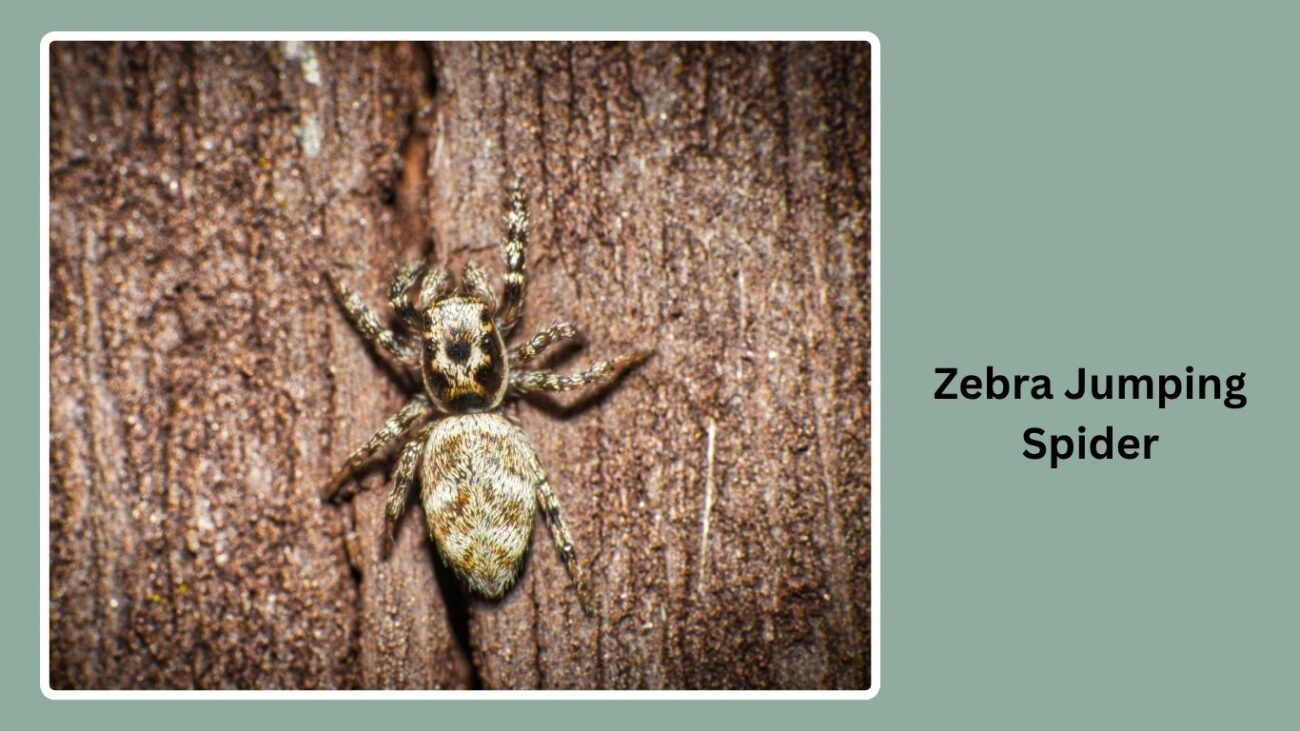
The Zebra Jumping Spider is a small, active spider known for its bold black-and-white stripes and curious behavior. Commonly seen indoors, it often explores windowsills and walls during the day.
Identification
- Size: about 5–7 mm
- Distinct black and white striped pattern (zebra-like)
- Compact body with short, powerful legs
- Large, forward-facing eyes
- Moves in quick, jerky motions
Behavior
Zebra Jumping Spiders are active hunters. They don’t spin webs for prey but instead stalk and pounce. Known for their curiosity, they often watch nearby movement and can even recognize shadows and light changes.
Habitat
Indoors, they are found near windows, under light fixtures, or crawling along walls. They prefer sunlit areas and are frequently seen during the day. Outdoors, they rest on walls, fences, and tree bark.
Web Type
They do not build webs to trap food. They create small silk retreats for resting or molting, typically in hidden spots or under objects.
14. Cobweb Spider (Theridiidae family)

Cobweb Spiders are a large group of house spiders best known for spinning messy, irregular webs. Many common household spiders, including the American House Spider and False Widow, belong to this family. They are non-aggressive and helpful in controlling insect pests indoors.
Identification
- Size varies: 3–10 mm depending on species
- Usually brown, gray, or black
- Round abdomen with various markings
- Long, thin legs with fine hairs
- Often seen hanging upside down in webs
Behavior
Cobweb Spiders stay in their webs most of the time, waiting for prey to become ensnared. They are harmless to humans and may abandon their web if it’s disturbed repeatedly or if prey is scarce.
Habitat
They prefer undisturbed indoor areas like corners of ceilings, behind furniture, under sinks, or in storage rooms. You may also find them in basements, closets, or garages.
Web Type
Their webs are messy, three-dimensional cobwebs built in corners, between objects, or under ledges. They include a retreat spot where the spider hides during the day.
15. False Widow Spider (Steatoda spp.)
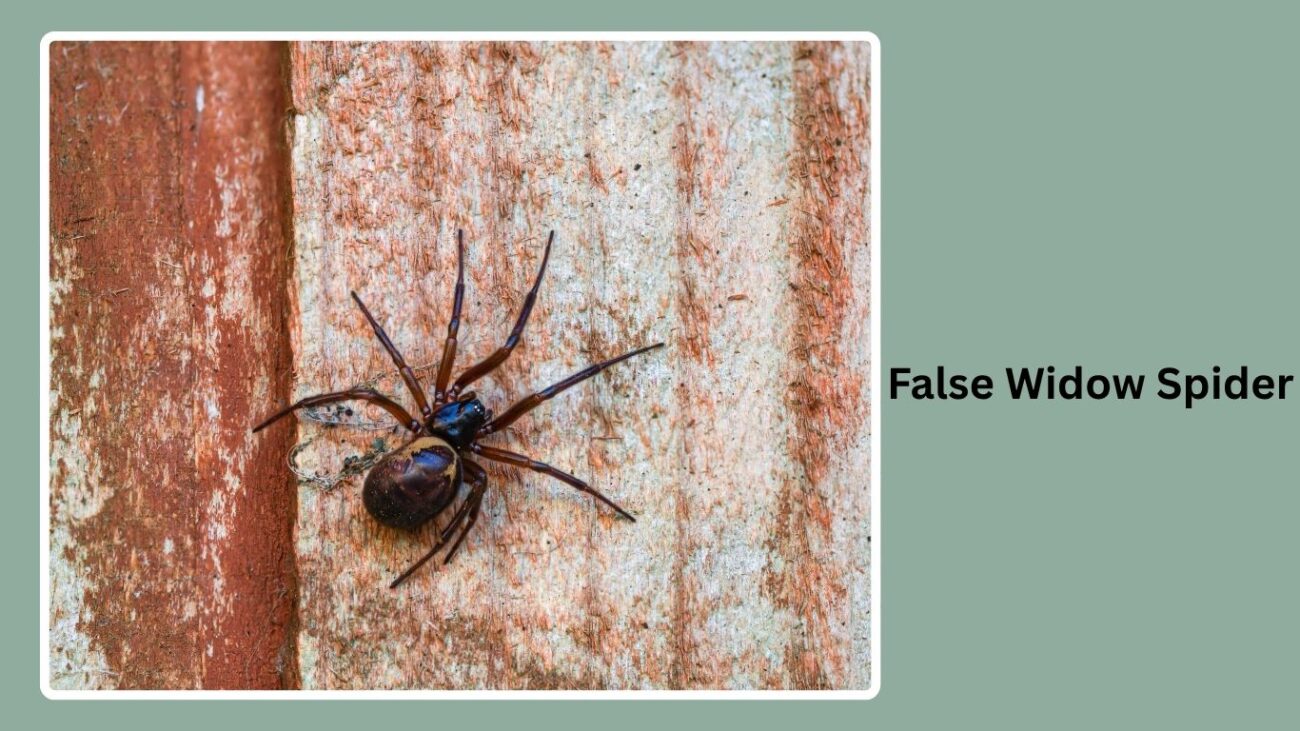
False Widow Spiders are often mistaken for the more dangerous Black Widow due to their similar shape and dark coloring. They are mildly venomous, but their bites are usually no more harmful than a bee sting. They’re becoming more common in urban homes.
Identification
- Size: 7–15 mm
- Dark brown to black body
- Glossy, bulbous abdomen
- May have pale markings on the back (sometimes resembling a skull or crescent)
- Shorter legs compared to true widows
Behavior
False Widows are mostly nocturnal and sedentary. They stay in their webs during the day and come out at night to hunt. While they can bite if provoked, they generally avoid human contact.
Habitat
They favor quiet corners in homes, especially in sheds, under window sills, in garages, behind cupboards, and under appliances. They often settle in the same spot for long periods.
Web Type
They spin strong, irregular cobwebs close to the ground or in elevated corners. The web often has a hidden retreat where the spider hides during daylight hours.
16. Yellow Sac Spider (Cheiracanthium inclusum)
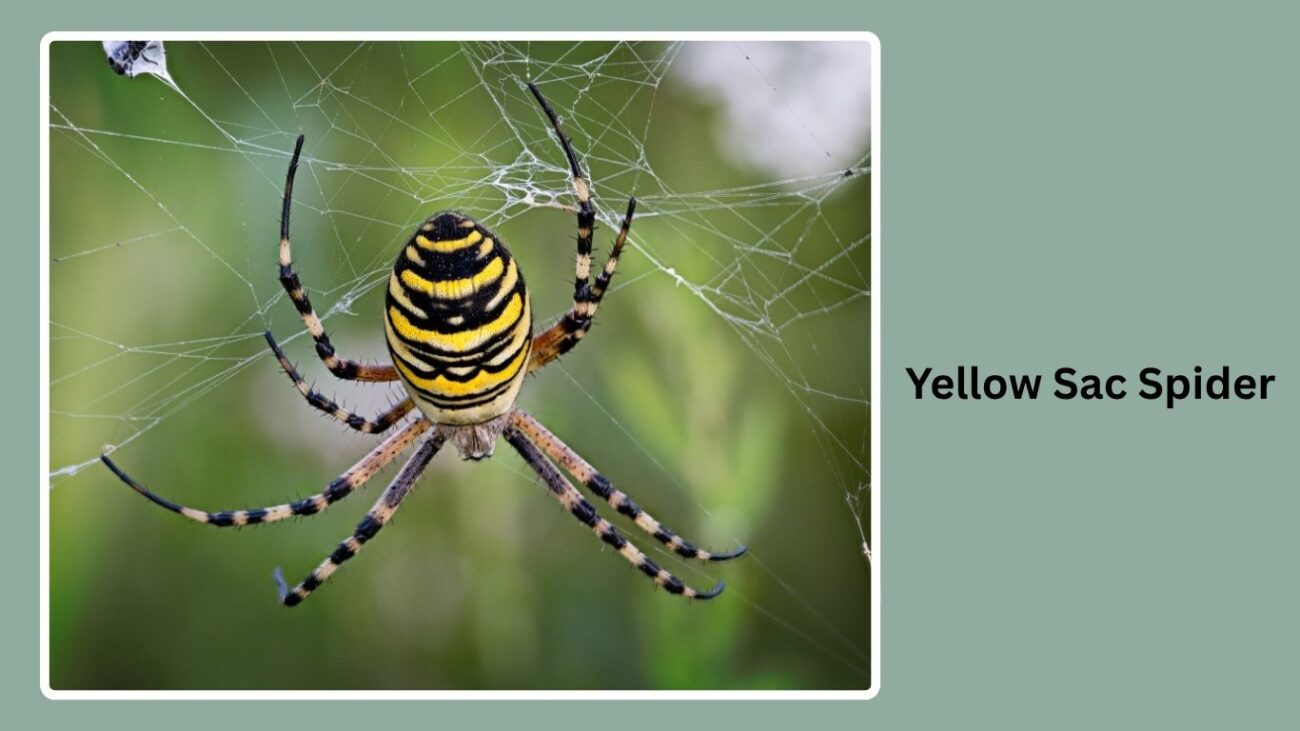
The Yellow Sac Spider is a small, active house spider that frequently enters homes during colder months. Though its bite can cause mild irritation, it is not considered medically serious. It’s one of the few spiders likely to bite humans, usually in self-defense.
Identification
- Size: 5–10 mm
- Pale yellow, cream, or light green body
- Slightly darker fangs and tips of legs
- Oval-shaped abdomen with no distinctive markings
- Long, thin legs with fine hair
Behavior
Yellow Sac Spiders are nocturnal hunters that roam around looking for prey. They don’t use webs for catching food but create a silken sac or retreat to rest during the day. They may fall from ceilings or hide in bedding and clothing, leading to accidental bites.
Habitat
They commonly dwell in corners of ceilings, behind pictures, in curtain folds, closets, and under furniture. Outdoors, they hide under leaves or bark but prefer warm interiors in fall and winter.
Web Type
They build small, silk sacs in upper corners, behind furniture, or inside wall cracks—not designed to trap prey but used for shelter and egg-laying.
17. Barn Funnel Weaver (Tegenaria spp.)
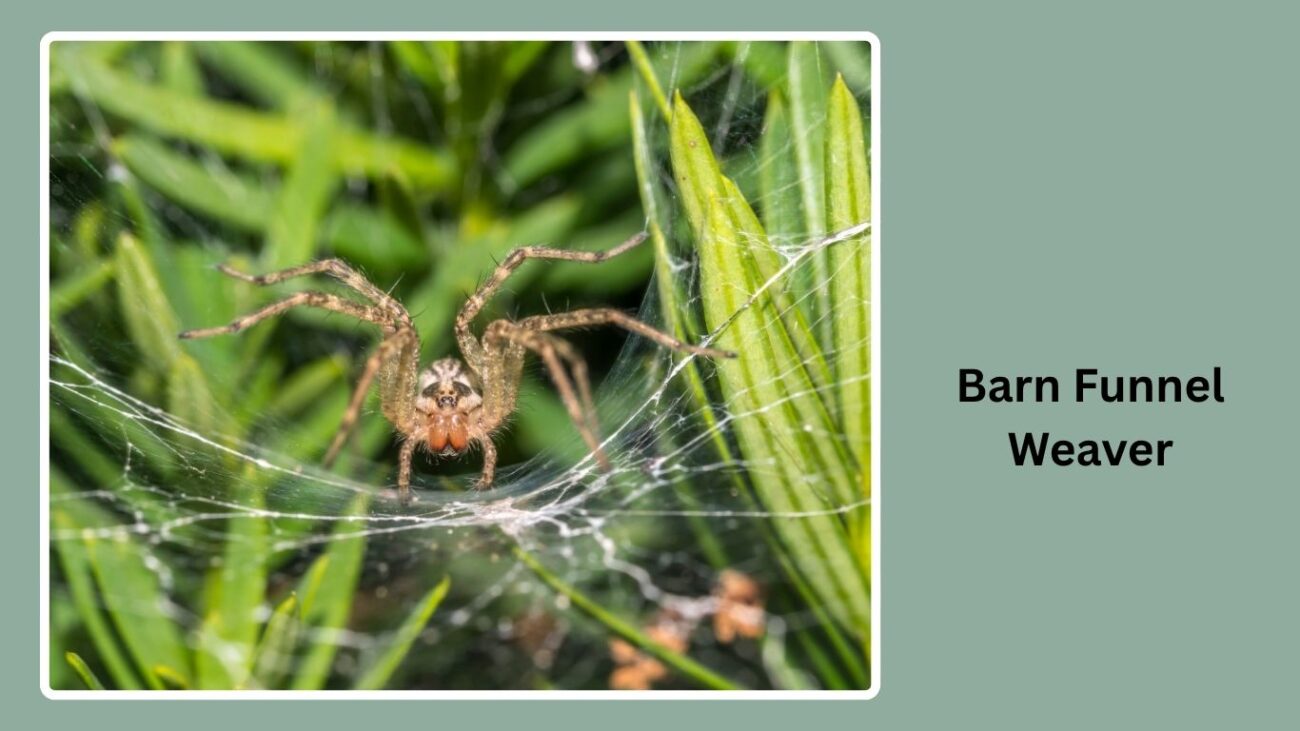
The Barn Funnel Weaver is a close relative of the Giant House Spider and Domestic House Spider. Known for its speed and large webs, it’s often found indoors in dark, dusty corners or barns, hence the name.
Identification
- Body length: 7–12 mm
- Brown to reddish-brown with lighter leg banding
- Abdomen features chevron or zigzag markings
- Long legs with a hairy appearance
- Funnel-shaped spinnerets visible at rear
Behavior
These spiders are reclusive and spend most of their time in their funnel-shaped webs. They wait at the back of the web and rush out when prey disturbs the web. Though they may run fast, they don’t bite unless handled directly.
Habitat
Common in barns, sheds, garages, basements, and crawlspaces. Indoors, they’re usually seen in corners, under shelves, or near foundation cracks.
Web Type
Creates horizontal sheet webs with a distinct funnel retreat where the spider hides. The web isn’t sticky, but its shape traps and slows prey effectively.
18. Ghost Spider (Anyphaenidae family)
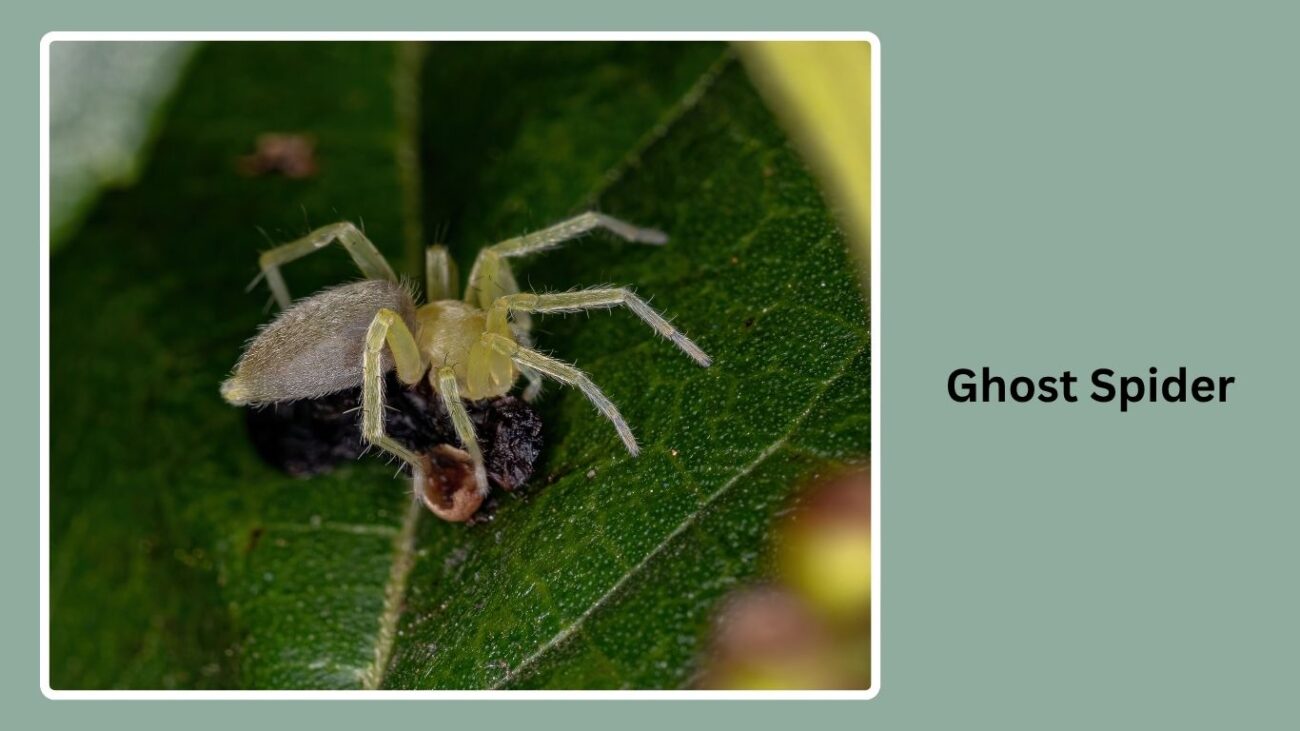
Ghost Spiders are small, pale spiders that occasionally enter homes. They are fast-moving and nocturnal, often confused with sac spiders due to their similar appearance. Despite their name, they are harmless and rarely noticed unless actively hunted for.
Identification
- Size: 4–10 mm
- Pale tan, gray, or off-white body (giving a “ghostly” appearance)
- Smooth, oval-shaped abdomen
- Long legs, typically without banding
- Quick and active runners
Behavior
Ghost Spiders do not build webs for capturing prey. They are active hunters, feeding on small insects at night. During the day, they hide in crevices or behind baseboards. They are shy and avoid confrontation with humans.
Habitat
Indoors, they are seen near walls, baseboards, ceiling corners, or behind furniture. They are more common in older homes or places with cracks and small hiding spaces.
Web Type
They build small silken retreats or resting sacs in hidden spots—these are not prey-catching webs but resting sites.
19. Southern House Spider (Kukulcania hibernalis)

The Southern House Spider is a large, slow-moving spider found mainly in the southern U.S. It resembles the Brown Recluse but lacks venom potency. Males are often seen wandering indoors, while females remain in their webs.
Identification
- Males: up to 18 mm; Females: larger with fuller abdomens
- Brown to dark gray color
- Long legs with fine hairs
- Males have a slimmer build; females are bulkier
- No violin marking (helps distinguish from Brown Recluse)
Behavior
Males wander in search of females, often entering homes and startling people. They’re clumsy walkers and may get trapped in sinks or tubs. Females stay hidden in their webs and rarely leave.
Habitat
Prefers cracks, crevices, and corners of older buildings. Often found behind shutters, in barns, storage rooms, garages, and attics.
Web Type
Spins messy, irregular sheet-like webs in secluded locations. The web includes a retreat where the spider hides and waits for prey.
20. Broad-Faced Sac Spider (Trachelas tranquillus)

Broad-Faced Sac Spiders are small hunters often seen indoors during fall. They resemble Yellow Sac Spiders but have a more robust build and reddish-brown coloration. Their bite can cause mild symptoms, similar to a bee sting.
Identification
- Size: 6–10 mm
- Dark reddish-brown cephalothorax
- Pale gray or tan abdomen
- Broad head and face region
- Strong, thick legs
Behavior
These spiders are solitary and active at night, roaming surfaces in search of insects. During the day, they hide in small silk sacs tucked into corners or wall gaps. They are more defensive than many other house spiders but still not dangerous.
Habitat
Indoors, they are commonly found near ceilings, behind furniture, and in basements. Outdoors, they hide under stones, logs, or loose bark and often move inside during cooler months.
Web Type
They don’t spin webs to capture prey but build silken sacs for shelter, usually in upper corners or tight indoor crevices.
FAQs
Are house spiders dangerous to humans?
Most house spiders are harmless. While a few species like the Brown Recluse or Black Widow have venom, bites are rare and generally avoidable.
Why do spiders come inside the house?
Spiders enter homes in search of food, warmth, or shelter—especially during colder months or mating season.
Should I remove house spiders?
You can, but they’re beneficial. House spiders help control flies, mosquitoes, and other indoor pests naturally.
How can I prevent spiders from entering my home?
Seal cracks, reduce clutter, vacuum regularly, and remove webs from corners to make your home less inviting to spiders.


